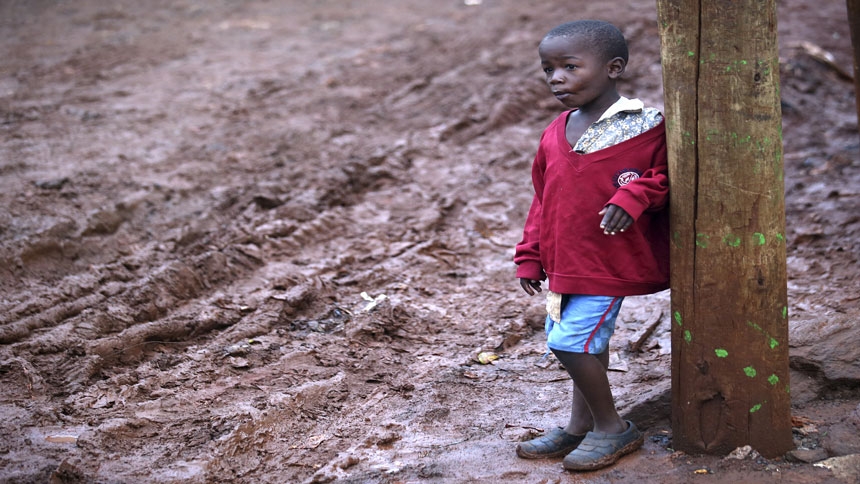
“Little children, let us not love in word or speech, but in deed and in truth” (1 Jn 3:18). These words of the Apostle John voice an imperative that no Christian may disregard. … Love has no alibi.”
In declaring the first World Day of the Poor on Sunday, November 19, Pope Francis has exhorted believers to “draw near to the poor, to encounter them, to meet their gaze, to embrace them and to let them feel the warmth of love that breaks through their solitude.”
What are the practical implications of this? In a world where “thoughts and prayers” are offered frequently, how can the faithful bridge the gap that exists between words and concrete actions aimed at eliminating systemic poverty? What is the situation of the poor in the United States? In the world? What does the Church teach about poverty? How does one make a difference?
From the earliest days of Christianity, service to the poor has been a hallmark of believers. To these early Christians, being a disciple of Jesus meant demonstrating fraternity and solidarity, in obedience to the Master’s proclamation that the poor are blessed and heirs to the Kingdom of heaven (cf. Mt 5:3).”
Poverty in the U.S.
• Median household income is up and poverty is down for the second year in a row
• Government programs succeed in raising many families out of poverty
• Many families rely on programs to stay out of poverty
• Many families who are above the poverty line are still close – almost 1 in 3 report family household income below 200 percent of threshold
• Poverty rate for children related to the householder is 17.6%, representing 12.8 million children.
(http://www.usccb.org/issues-and-action/human-life-and-dignity/poverty/domestic/upload/poverty-webinar-10-11-2017.pdf)
Global Poverty
While there has been marked progress on reducing poverty over the past decades, the number of people living in extreme poverty globally remains high.
• In 2013, 10.7 percent of the world’s population, 767 million people, lived on less than U.S. $1.90 a day.
• Half of the extreme poor live in Sub-Saharan Africa, with 389 million people living on less than U.S. $1.90 a day in 2013, more than all the other regions combined.
• A vast majority of the global poor live in rural areas and are poorly educated, mostly employed in the agricultural sector, and more than half are under 18 years of age.
Access to good schools, healthcare, electricity, safe water and other critical services remains elusive. http://www.worldbank.org/en/topic/poverty/overview
What the Church Teaches
The mandate to help the poor is embodied in the Gospel, in Catholic Social Teaching, and in many other documents of the Church. The Catechism of the Catholic Church, in no. 2444 and 2448, tells us "The Church's love for the poor . . . is a part of her constant tradition." This love is inspired by the Gospel of the Beatitudes, of the poverty of Jesus, and of his concern for the poor. . . . "Those who are oppressed by poverty are the object of a preferential love on the part of the Church which, since her origin and in spite of the failings of many of her members, has not ceased to work for their relief, defense, and liberation."
How to Help Bridge the Gap
What are the significant poverty issues in your community? Affordable housing? Unemployment? Fair wages? Food insecurity? Safe Water? Access to healthcare? Access to quality education? How does your community compare to others? Check out the PovertyUSA Map at http://www.povertyusa.org/the-state-of-poverty/poverty-map-state/
Catholic Campaign for Human Development
The special collection for the Catholic Campaign for Human Development (CCHD) is taken on the weekend of the World Day of the Poor. CCHD supports groups that empower low-income people to break the cycle of poverty. Many of these projects include protecting workers’ rights, expanding access to healthcare, and reforming the criminal justice system. Twenty-five percent of the funds remain in each diocese to support local projects.
Catholic Relief Services
Catholic Relief Services assists the poor and vulnerable overseas, through promoting human development, responding to major emergencies, fighting disease and poverty, nurturing peaceful and just societies, and assisting people on the basis of need, not creed, race or nationality. Catholic Relief Services is supported by donations from a national collection conducted each year in March, and anytime at https://support.crs.org/donate/
Additional Actions to Take
• Become educated on what the situation is in the community and what specific help is needed.
• Contact elected officials. Ask them to address poverty in all its forms. Vote accordingly.
• Become an advocate. Use social media, personal contacts, and other media to bring poverty issues to the fore.
• Volunteer and donate generously.
• Pray.
https://w2.vatican.va/content/francesco/en/messages/poveri/documents/papa-francesco_20170613_messaggio-i-giornatamondiale-poveri-2017.html
